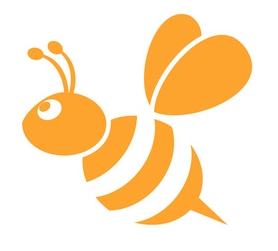BEE POLLEN ALERT!
 Not All Bee Pollen Products are Equal.
Not All Bee Pollen Products are Equal.
Proper quality control, processing and cold storage are all critical and expensive steps when manufacturing a raw, unprocessed superfood like bee pollen. Processing techniques have been developed to increase shelf life by preventing spoilage, but bee pollen is basically fresh produce.
Like any living food, if you kill the nutrients with processing techniques, it ceases to be living! Processed pollen has been known to be baked to remove moisture, irradiated to prevent spoilage, and has spent minimal, if any, time in cold storage.
 Heat Is The Enemy!
Heat Is The Enemy!
Did you know that enzymes begin to be denatured at 118 degrees F? Enzymes are an important component of bee pollen, and they are only one of the many classes of nutrients in bee pollen that exhibit bioactivity. Other classes of bioactive phytonutrients found in bee pollen include polyphenols, phytosterols, carotenoids and more.
Excessive exposure to heat can degrade the bioactivity of certain nutrients. HIGH DESERT Bee Pollen is stored cold from receiving, through processing, until shipped to you. When you buy HIGH DESERT Bee Pollen, look at the granules. You'll find them semi-moist and fresh.
Some other brands of bee pollen granules are hard and dry - this is the compromise: some companies will not go to the expense of cold storing their product, so they sacrifice nutritional integrity for increased shelf life. You benefit from neither! Would you rather eat a fresh apple or a dehydrated apple? Go for the freshness!
 Blending Is Important For A Balanced Nutritional Profile
Blending Is Important For A Balanced Nutritional Profile
A lot of health food stores sell local bee pollen, which can be very good quality if it is cold-stored and packaged correctly. However, there is a nutritional advantage to eating pollen blended from different geographic areas.
Blending pollen from different geographic areas produces a product with a more balanced nutritional profile than that of local pollens. Look at your local bee pollen. It is mostly one single color. That's because it is mostly single source pollen, predominately from a limited number of species of plant.
Look at HIGH DESERT Bee Pollen and you will see a rainbow of hues and colors. Each color represents a different species of plant. We collect bee pollen from a wide range of states and geographic areas and we blend the different pollen together. This is important for a balanced nutritional profile, especially considering the soil depletion of minerals and nutrients in certain areas.
Only by blending pollen of different species and from different areas and climates can you achieve the balanced nutritional profile of HIGH DESERT Bee Pollen. Fill in the nutritional gaps in your diet!
 The First And The Best!
The First And The Best!
In the 1970's Royden Brown patented the first bee pollen collection device. Since that time he tirelessly promoted beehive products. He single-handedly created the industry that you see today. His company, CC Pollen and its HIGH DESERT brand is known around the globe as the standard by which other beehive products are measured.

